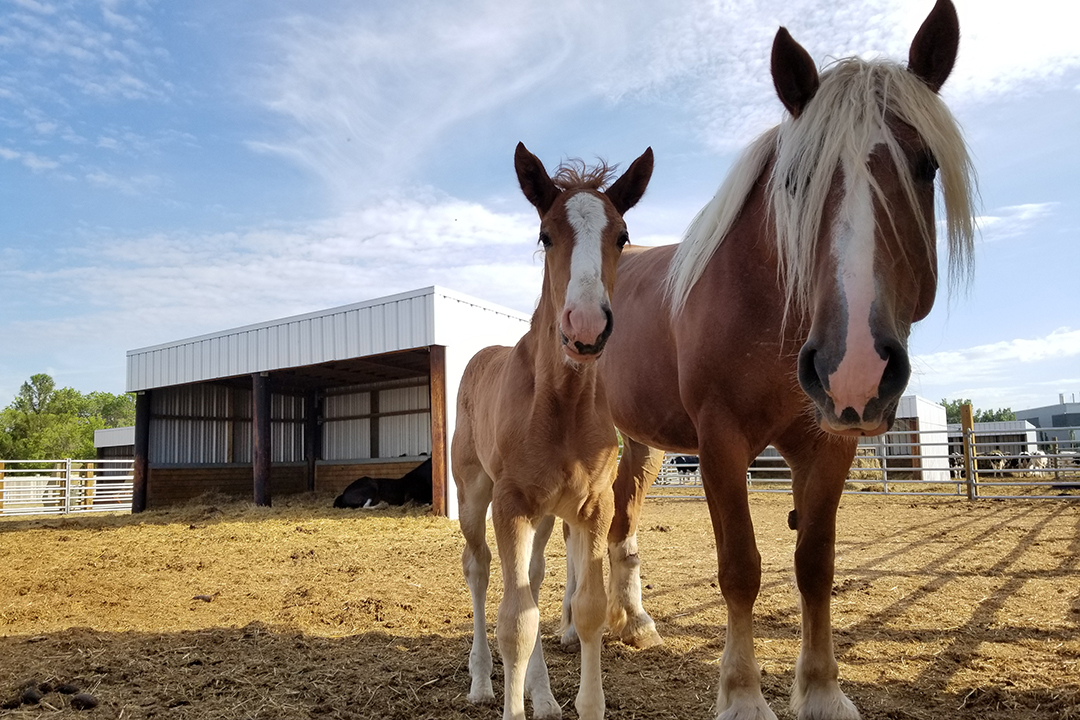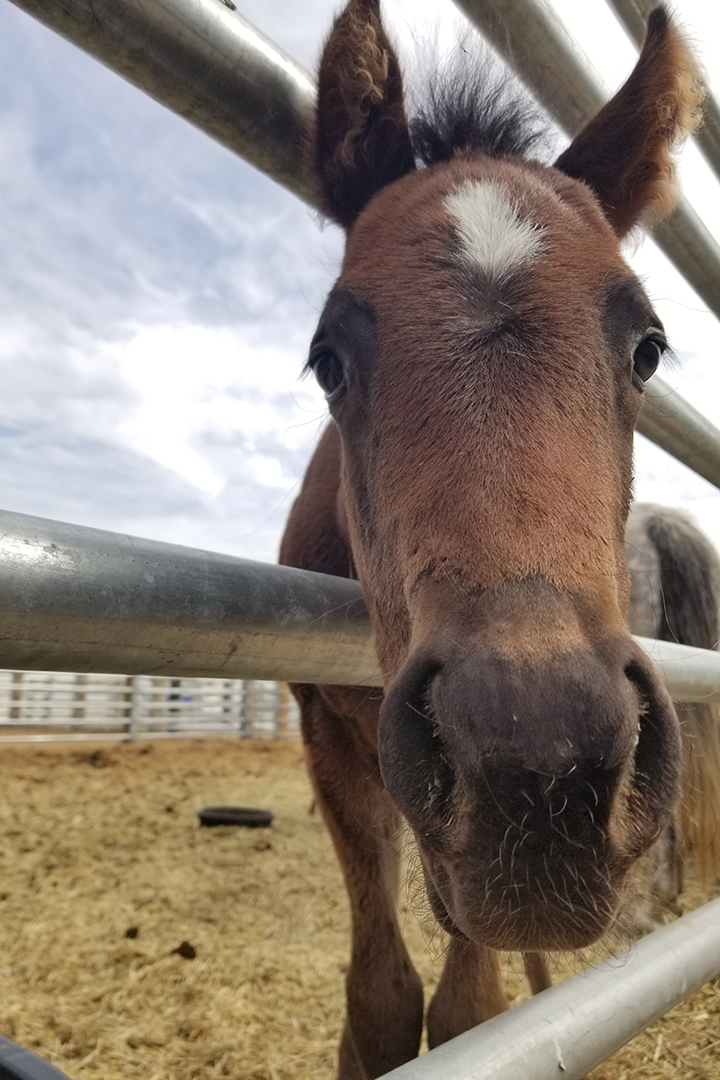
Iodine important ingredient for equine fetus
Paddocks at the Western College of Veterinary Medicine (WCVM) are full of frisky foals and watchful mothers during the spring foaling and breeding season. While most of these mares and foals are thriving, some foals born on the Canadian Prairies aren’t so lucky.
By Brandi BakkenA devastating condition called congenital hypothyroid dysmaturity syndrome (CHDS) affects a number of the region’s foals each year.
“We looked at our records a few years ago, and CHDS is definitely one of the leading causes for [foal] admission here at the WCVM [Veterinary Medical Centre],” says Dr. Claire Card, a WCVM professor and board-certified specialist in theriogenology (reproduction).
“It is a significant cause of admissions to many veterinary facilities.”
Foals born with CHDS tend to have abnormalities including an enlarged thyroid gland, a lower jaw protruding past the upper jaw, contracted tendons, and abnormal knee and hock bones. Some cases are so severe that euthanasia is the only option.
The thyroid gland is responsible for producing thyroid hormones, which have important roles in development, metabolism and growth. The fetus produces its own thyroid hormones during late gestation, but iodine — an essential nutrient — is a critical ingredient in this process.
When a mare can’t supply iodine to its fetus, the unborn foal becomes iodine-deficient. Once it’s born, the foal’s thyroid gland doesn’t function because it needs iodine to produce thyroid hormones.
Card, along with Dr. Maria Lopez, a theriogenology resident and graduate student at the WCVM, are collaborating with Dr. Mariana Diel de Amorim of Cornell University’s College of Veterinary Medicine. The researchers’ goal is to characterize the relationship between iodine-deficient regions and mare-foal thyroid gland function and health.
They hope to better understand the way iodine is related to overall health in terms of blood (serum) levels in mares and foals as well as in the mares’ milk or colostrum levels.
“There is some information on the normal levels of iodine [in mares and foals], but the data is not very robust and the reference ranges are not clear,” says Lopez. “Proper iodine levels in milk lacks even more information.”
In 2018 and 2019, Card and her research team gathered serum, milk and colostrum samples from mares, along with serum samples from their foals. Their plan is to analyze these samples for iodine and thyroid hormones. They’re also collecting samples of the mares’ and foals’ manes to evaluate selenium levels.
In 2019 the team added ultrasonography as a research tool, using the medical images to visualize and measure the thyroid gland dimensions in mares and foals.
The additional information provided by the ultrasound exams will aid the team in identifying hypothyroid foals that don’t have goiters (enlarged thyroid glands) – a common clinical sign of the disease. What’s challenging is that some foals born on the Prairies are deficient in thyroid hormone levels – an indicator of hypothyroidism – but still have thyroid glands of normal size.

“We are trying to determine [with ultrasonography] the normal thyroid gland dimensions versus cases where we know we have a hypothyroid foal to see if there is a difference,” says Card.
The team believes this information will add value to their previous research work completed in 2018. These preliminary studies showed that 73 per cent (27 of 37 horses sampled from 16 different farms) in the three Prairie provinces had marginal or deficient serum iodine levels. Thirty-eight per cent (17 of 45 foals) from these farms had marginal or low serum iodine levels, and 22 per cent (eight of 37 mares’ milk samples) had inadequate amounts of iodine.
Card believes that factors such as inadequate iodine intake occurring during or before pregnancy cause a marginal or low level of iodine. Pregnancy creates additional metabolic demands, and the mares become extremely iodine-deficient, resulting in CHDS foals.
Additionally, previous research has shown that glucosinolates (compounds commonly found in common pasture weeds, mustard and canola plants) interfere with the iodine uptake in the thyroid and mammary gland – making milk an important sample to collect. As well, nitrates found in dugout water, fertilized pastures and green feeds (such as green oat hay) act in a similar manner to glucosinolates.
Many equine owners do supplement their horses with iodized salt blocks. However, Card’s team discovered in 2018 that despite allowing horses access to salt blocks, most tested horses had marginal or deficient iodine levels.
Many rural water supplies contain natural salts, meaning that the horses do not have a large enough salt craving to take in sufficient amounts of iodine from the blocks. To achieve sufficient levels of iodine intake, Card believes horse owners need to add the essential nutrient to their horses’ diets. For example, owners could use loose iodized salt to “top dress” their horses’ feed or buy a pelleted supplement for their animals.
“If it is an iodine deficiency, then we can recommend to owners to supplement their horses, but it is also important to know the limits … to ensure iodine toxicity is not caused,” says Lopez.
While the lack of information about CHDS is challenging, Lopez and Card are optimistic that by collecting the serum and milk samples, along with the additional data from ultrasonography, they can take the next step toward educating clients and preventing future CHDS cases.
The team’s research work is supported by the Mark and Pat DuMont Equine Orthopedics Research Fund, the Saskatchewan Agriculture and Development Fund, and the Townsend Equine Health Research Fund.
Brandi Bakken of Craik, Sask., is a second-year veterinary student at the WCVM. Her story is part of a series of articles written by WCVM summer research students.
